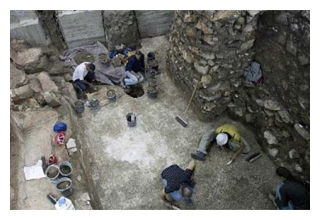
Romans are known for eating well, with mosaics from the empire portraying sumptuous displays of fruits, vegetables, cakes - and, of course, wine.
However, common people ate millet, a grain looked down upon by the wealthy as fit only for livestock, according to a new study published in the Journal of Anthropological Archaeology.
Researchers said the consumption of millet may have been linked to overall social status, with relatively poorer suburbanites eating more of the grain than did wealthier city dwellers.
The results come from an analysis of anonymous skeletons in the ancient city's cemeteries, 'LiveScience' reported.
"We don't know anything about their lives, which is why we're trying to use biochemical analysis to study them," said study leader Kristina Killgrove, an anthropologist at the University of West Florida.
In ancient Rome, however, diet varied based on social class and where a person lived.
Ancient texts have plenty to say about lavish Roman feasts. The wealthy could afford exotic fruits and vegetables, as well as shellfish and snails.
A formal feast involved multiple dishes, eaten from a reclined position, and could last for hours.
But ancient Roman writers have less to say about the poor, other than directions for landowners on the appropriate amount to feed slaves, who made up about 30 per cent of the city's population.
Killgrove and her colleagues analysed portions of bones from the femurs of 36 individuals from two Roman cemeteries.
To determine diets from the Roman skeletons, the researchers analysed the bones for isotopes of carbon and nitrogen.
"We found that people were eating very different things," Killgrove said.
Individuals buried in the mausoleum at Casa Bertone ate less millet than those buried in the simple cemetery surrounding Casa Bertone's mausoleum.
Those buried in the farther-flung Castellaccio Europarco cemetery ate more millet than anyone at Casa Bertone, suggesting they were less well-off than those living closer to or within the city walls.



Reader Comments
to our Newsletter